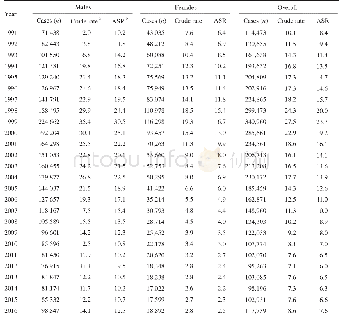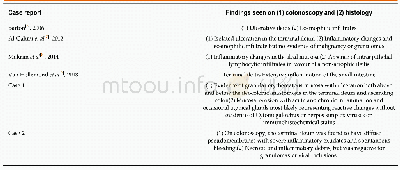《Table 5 Bleeding rates per colonoscopy indication and procedure type from recent studies with sampl
 提示:宽带有限、当前游客访问压缩模式
提示:宽带有限、当前游客访问压缩模式
本系列图表出处文件名:随高清版一同展现
《Adverse events related to colonoscopy: Global trends and future challenges》
Large-scale studies about colonoscopy perforations were less reported before 2000.Araghizadeh et al[25]showed that 31 perforations occurred in 34,620 colonoscopies(0.09%)over 30 years.Two other studies also showed that the overall rate of perforation is<0.1%[26,27].However,another large population-based cohort study demonstrated 108 perforations after 39,286 colonoscopies(0.20%),and reported that the risk of perforation during a colonoscopy is roughly double compared with sigmoidoscopy[28].Many large-scale studies on colonoscopy perforations have been published since 2000.In particular,recent studies have assessed the occurrence of colonoscopy perforations using big data analyses[16,29,30].A large study based on comprehensive French health insurance data,which included nearly one million colonoscopies,suggested that the estimated perforation rate was 0.04%(424/947,061)[29].That study indicated that a patient’s elderly status,resecting a large polyp(>10 mm),and emergency colonoscopy are associated with a risk of perforation.Another study also reported similar perforation rates,such as 0.02%(192/1,144,900)[16].Pox et al[30]stated the results of 2,821,392 colonoscopies conducted over 6 years in Germany.To date,this cohort is the largest database of screening colonoscopies worldwide.The overall perforation rate in that cohort was 0.016%(439/2,821,392),including 279(0.46/1000)patients with polypectomy and 160 patients without polypectomy(0.12/1000)[30].The most significant risk factor for adverse events was a polypectomy.The frequencies of colon perforations in some larger studies(sample sizes>50,000 cases)published since 2000 are shown in Table 1.The perforation rate tends to remain stable and not to change(Figure 1).The results of our review are consistent with a recent large-scale meta-analysis by Reumkens et al[5]showing that the overall perforation rate was 0.05%and the trends in the past 15 years did not show any significant change.
| 图表编号 | XD0049332300 严禁用于非法目的 |
|---|---|
| 绘制时间 | 2019.01.14 |
| 作者 | Su Young Kim、Hyun-Soo Kim、Hong Jun Park |
| 绘制单位 | Department of Internal Medicine, Yonsei University Wonju College of Medicine、Department of Internal Medicine, Yonsei University Wonju College of Medicine、Department of Internal Medicine, Yonsei University Wonju College of Medicine |
| 更多格式 | 高清、无水印(增值服务) |
查看“Table 5 Bleeding rates per colonoscopy indication and procedure type from recent studies with sample sizes>50, 000 cases”的人还看了
-

- Table 1 Number of cases, crude and age-standardized reported incidence rates (per 100, 000) of gonorrhoea in males and f





